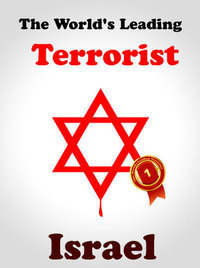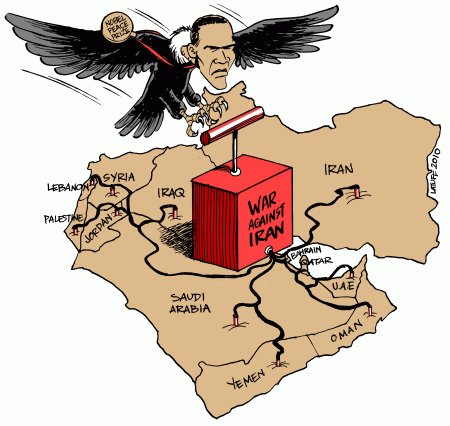43 years to the Israeli Occupation!
1230 Days to the Israeli Blockade of Gaza:
 End Israeli Apartheid Now!
End Israeli Apartheid Now!
Help to stop the next war! Support Boycott, Divestment and Sanctions of the Israeli regime
Support Palestinian universities – spread the BDS campaign – it is what people under the Israeli jackboot ask you to do
Any army fighting against children, has already lost the war!
Israeli War Criminals and Pirates – to the International Criminal Court, NOW!
Make Zionism History!
Demand the destruction of Israeli WMDs NOW!

EDITOR: Surprise, surprise!
Don’t say you have not been told. All the argument about Israelis being more open than their government have always been nonsensical – Israel is indeed a Jewish democracy, for Jews only, and as such, its government is representing this sector quite well…
Now the mathematics here is very interesting. Given that 22% of Israelis are indeed Palestinians, none of which are included in this majority, so leaving about 78% of the population which is mainly Jewish. This means that over 80% of Israel’s Jews support settlement building continuing. It is now veryclear why the Washington talks can only lead to further bloodshed.
Two-thirds of Israelis support settlement building: poll: Yahoo
JERUSALEM (AFP) – Two-thirds of Israelis support a total or partial resumption of settlement building in the occupied West Bank, according to a poll broadcast on Wednesday, as peace talks are due to restart in Washington.
Thirty nine percent of those questioned said they favour construction resuming in all the settlements from September 26, when a partial 10-month moratorium imposed by the Israeli government under US pressure expires.
Another quarter said they thought construction should only restart in the larger settlement blocks and not in smaller, isolated settlements, according to the poll, aired on private Channel Ten TV station.
Only 21 percent supported a continuation of the building freeze, with the remainder undecided.
The poll was carried out by the Gal Hadash Institute on behalf of Channel Ten, shortly after an attack in the Hebron area of the West Bank on Tuesday that killed four Israeli settlers.
The channel did not specify how many people were questioned in the poll or give the margin of error.
The settlement issue has been one of the thorniest in peace efforts and will be addressed during the negotiations due to start on Thursday, the first direct talks in 20 months.
In Washington, Israeli Prime Minister Benjamin Netanyahu told US Secretary of Hillary Clinton on Tuesday that there was “no change to the cabinet decision to end the (partial construction freeze) at the end of September 2010,” his office said.
The Palestinians have insisted this would torpedo the peace talks.
Architects out of Ariel: Haaretz
The time has come for those planning the red-roofed facts on the ground to refuse to design any more buildings in the settlements.
By Esther Zandberg
After dozens of actors, theater workers, professors and writers declared their refusal to appear in the new cultural hall in Ariel or any other settlement, the time has come for architects and planners to wake up and announce publicly that they will not continue planning new buildings in the settlements.
The architects protests will be more meaningful than any other effort. Architecture is the implementer of political decisions. Architects and planners are the ones who implement in practice the occupation policy of Israeli governments and continue the conflict on the drafting table.
Unlike the scenery in a play, the facts that architects establish on the ground do not go back into the theater warehouse after the curtain falls. Their footprint is irreversible. Those who sketch the blue lines of master plans of settlements are bound more than anyone else by the red lines of conscience.
Architects have a hand in all aspects of the settlement effort in Judea and Samaria. They are the ones who prepare the master plans for establishing communities, they plan the red-roofed residential neighborhoods in Ariel and all the other communities, and shape the public facilities built there.
The new cultural hall in Ariel was also designed by an architect, as if it were just another cultural center in another community within the state of Israel.
A B’Tselem report defines Ariel as a long, narrow enclave that penetrates deep into Palestinian territory, a place that was designed as it was not for pure planning reasons, but based on political considerations the gist of which was a desire to create a buffer between Palestinian towns and interrupt the territorial continuity between them.
Architects and planners do not need B’Tselem; they know enough about analyzing maps and plans to discern on their own that this is the situation. Their voices are what should be heard.
In the architectural community, more than in any cultural area, it is common practice to have sterile separation between architecture and politics. This is a comfortable arrangement that enables many within the community to continue viewing themselves as leftist, while planning for the right.
From the ranks of architects, no public protest has been voiced against the presence of an architecture department in Ariel College, which instills in its students the art of alienation from the surroundings, in contrast to the proper principles of planning and the appropriate professional ethic.
They never spoke to them about politics, as students in the department said in an interview here seven years ago. No wonder that the surroundings seem to them like an unspoiled biblical panorama, they said, and they feel free and uninhibited there.
Culture Minister Limor Livnat’s call this week urging theater people to leave the political debate outside of cultural and artistic life is superfluous in the architectural community, where the political debate is always pushed outside professional life, although it makes its way in through the back door.
Trends and worldviews seep in from the other side of the Green Line and impact on architecture in the rest of Israel more than architects are willing to admit. A protest by established architects within the community, figures with a reputation and influence, could lead to a protest movement that will draw many, restore to architecture its confidence in itself and its values, and may also make its own contribution to the end of the conflict over the land. Architects? Protest? Peace really can happen.
EDITOR: A fascinating argument
Two Haaretz leading commentators, Aluf Benn and Gideon Levy, argue about the ‘humanity’ of the IOF, with Benn giving the platitudinal answer building on his own army service, and Levy taking his argument apart. All this was of course sparked off by the Eden Abergil saga, once she has published her disgraceful photographs on FaceBook.
When I was Eden Abergil: Haaretz
The occupation did not transform us into law-breaking criminals, it only taught us that it’s best to be on the stronger side.
By Aluf Benn
The photographs of the female soldier Eden Abergil on Facebook with the young, bound Palestinians did not “shock” me, as did the automatic responses of people on the left who complained, as usual, about the corrupting occupation and our moral deterioration. Instead, the photos brought back memories from my military service. Once, I was also Eden Abergil: I served in a Military Police unit in Lebanon whose mission was to take prisoners from the Shin Bet’s interrogation rooms to the large holding camp of Ansar. I covered many eyes with pieces of cloth, I bound many wrists with plastic cuffs.
I never knew who the prisoners were and what they had done wrong, and I was not trained to know how to treat them. Everything was improvised. They showed me how to cuff them, apply the piece of cloth and load them onto army vehicles. And off we went. Very quickly I learned four words in Arabic that soldiers used when handling the prisoners: aud (sit ), um (stand ), yidak (put your hands out ) and uskut (quiet ). In the basement for Shin Bet interrogations at Nabatieh, in an old tobacco factory that had been transformed into the regional division headquarters, I saw prisoners eating like dogs, bent over with their hands tied behind their backs. And I smelled their sweat and urine.
I never saw “irregularities.” No beatings, no slappings, no maimings. But if the cuffs were put on a bit too tight, half a centimeter that couldn’t be reversed, the prisoner suffered great pain. The palms swelled because blood flow was restricted, and the trip became a nightmare when the prisoners begin to beg: “Captain, captain, idi, idi [my hands].” There were soldiers who tied the cuffs on too tight – a small torture that’s not in the reports by Amnesty International or the Goldstone Commission. It’s a torture that depends on a single soldier, without instructions from above or the military advocate general. An outlet for the hatred of Arabs during a routine mission.
And there were the humiliations. We did not force the prisoners to sing “Ana bahebak Mishmar Hagvul” (“I love you Border Police” ), as in the territories. The big hit back then was “Yaish Begin, mat Arafat” (“Long live Begin, Arafat is dead” ). In retrospect, it’s not certain that our Lebanese prisoners were opposed to Arafat’s removal; they may have even identified with that part of the song.
I once performed a leftist act of courage. I was guarding a truck full of prisoners who were waiting in the sun to be processed at Ansar. Suddenly a reservist thug showed up, with sneakers and no shirt on, and wanted to get on the truck and beat the prisoners. I refused to let him on. He made a threatening move. I had no chance against him one on one. I cocked my weapon, he took a step back and, enraged, said: “It’s because of people like you that the country is in the state it is.”
There was nothing special in my experience or in the photographs of Eden Abergil. Tens of thousands of soldiers who served in the territories and Lebanon, like Eden and me, were exposed to similar experiences. This is the routine of occupation: pieces of cloth, cuffs, sweat in the sun, aud, um, yidak, uskut. That’s the way it has been for 43 years. When 18-year-old soldiers with weapons guard civilians with their hands and eyes bound, and see the prisoners lying in pools of urine in the interrogation basements, the situation is violent and humiliating without diverging from orders or regulations.
The occupation did not “corrupt” me or any of my colleagues in the unit. We didn’t return home and run wild in the streets and abuse helpless people. Coming-of-age problems preoccupied us a lot more than our prisoners’ discomfort. Our political views were also not affected. Anyone who hated Arabs at home hated them when he was defeated and weak in the army, and those who read Uri Avnery before being drafted believed that it was necessary to leave Lebanon and the territories even when they actively took part in the occupation.
But we learned one lesson: Regardless of politics, it’s better to be the guard than the prisoner. Even those who dream of a permanent settlement and a Palestinian state and want to see the settlements gone prefer to tie on the cuffs than be cuffed. It’s better to guard the prisoner and eat at the mess hall than to eat on your knees with your hands tied behind your back in a smelly room. The occupation did not transform us into law-breaking criminals, it only taught us that it’s best to be on the stronger side.
A response to Pfc. Benn: Haaretz
Those who force people to eat like animals are not on the strong side.
By Gideon Levy
Pfc. Aluf Benn spent his years in the army in the Military Police in Lebanon. Yesterday, with commendable courage, he revealed his military routines in these pages (“When I was Eden Abergil”). He handcuffed and blindfolded people countless times and led many detainees to their cages. He saw detainees eating like dogs, as he put it – crouching with their hands tied behind their backs – and smelled their sweat and urine.
Benn tried to argue that everyone did this, thousands of soldiers of the occupation army for generations, and that is why he was not shocked by the acts of soldier Eden Abergil. That is a twisted but frightingly banal moral explanation: Everyone does it, so it’s okay. I never saw aberrations, Benn wrote, immediately after describing the detainees’ horrendous doglike meal. The occupation did not corrupt me, he added later, without batting an eyelash.
Well then, my excellent editor and good friend, Aluf Benn, your article is unequivocal proof of how much you have been corrupted after all – and, more seriously, how unaware of it you are. You didn’t know and didn’t ask who the prisoners were and why they were detained that way. Even their crouching to eat in handcuffs was deemed by you, a soldier who read Uri Avnery in his youth, to be normal, not a monstrous moral aberration. But really, what can you expect from a young brainwashed soldier?
The problem is that even today, with mature hindsight, you still don’t consider this an aberration. Why? Just because everybody did it.
The occupation did not turn us into lawless criminals, you write with a pure heart. Really? You handcuffed thousands of people for no reason, without trial, in humiliating conditions, causing them pain that made them scream, according to your testimony. Is this not a loss of humanity?
You didn’t return home to riot in the streets and abuse innocent people, you write, and that’s all very well. But you were silent. You were a complete accomplice to the crime, and you don’t even have a guilty conscience.
Try to think for a moment about the thousands of detainees that you handcuffed, humiliated and tortured. Think about their lives since then, the traumas and scars they carry, the hatred you planted in them. Now think about yourself, the soldier who has matured, become a family man and a respected columnist, a liberal editor to the bone, with independent and enlightened opinions. Could it be that you are blinder today than you were in your youth?
So that’s what everybody did. You have made an important contribution to Breaking the Silence, providing proof of what the occupation does to the occupier, who doesn’t even notice the ugly hump on his back anymore. The occupier you described is a grave development. An occupier who feels so good, so at peace with his past actions, is in need of profound self-examination.
“When I was Eden Abergil” is an important article. It honestly exposes what most of us don’t want to admit. It can’t be called false propaganda, and no one would dare accuse its author of being an anti-Semite. He was a dedicated soldier in the defense forces that committed (and still commit) such criminal deeds.
But the lesson Benn took away from his military service is perhaps the most chilling of all: It is better to be the one taking the prisoner, not the prisoner. It is better to be the one placing the handcuffs, not the handcuffed. It is better to guard the detainee and then go to the dining room than to eat crouching, hands cuffed, in a stinking hall. This is the binary world of the former Israeli soldier: either a brutal soldier, or his victim.
And what about the third possibility, which is neither one nor the other? The world has plenty of these – neither torturers not torture victims, neither occupiers nor the occupied. But they have been entirely erased from the narrow and frighteningly distorted image of the world that Israel plants in its soldiers’ minds.
Benn and his fellow soldiers just wanted to be on the strong side, and to hell with being on the just side. But those who forced people to eat like animals are not the strong side. Even the mighty, who once read the leftist Haolam Hazeh and now edits the op-ed page of Haaretz, has fallen.
Pfc. Benn certainly did not deserve a medal for his army service. Years later, he doesn’t even understand what was wrong with it.
